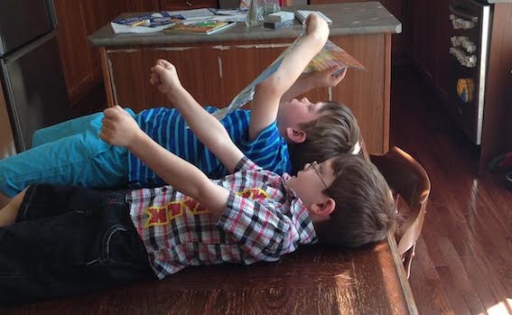Using Design to Listen Deeply to Our Students
A Modest Proposal
Do our children run into the school in the morning as quickly as they run out at the end of the day?—Milton Chen, Edutopia

Do our children run into the school in the morning as quickly as they run out at the end of the day?—Milton Chen, Edutopia

So here’s my Modest Proposal for 2015. Unlike the original piece (Swift, 1759) from which the subtitle for this entry is derived, however, the idea that I’m sharing is not penned as a piece of Juvenalian satire but, instead, as a very serious step to support the type of change in public education about which so many of us are dreaming.
I propose that in some school, somewhere in Canada, we engage in an extended period of deep, intentional observation of how students might use the resources—both human and material—that we’ve gathered for them in the name of their education. I propose that, for a two to three week period, the adults in the building step back from their role as teachers, administrators and parents and allow the kids—our primary users—to take over and create their version of school.
With obvious provisions in place to protect the safety of students and staff, what could we learn about our young people if we were to release much of our decision-making power for a brief period of time, allowing them the freedom, the space and the resources to design their own environments and contexts for learning.
What would they tell us about the organization of time, the allocation of space, the types of learning experiences that were most engaging and most worthwhile? What new insights could the experience provide us in terms of how students are grouped, the types of resources that are most useful, how technology might be best used? What resources would our students identify as being most valuable? What are the needs and challenges around which students would engage in new ways thinking and new approaches to design?
What new structures and protocols might emerge as the result of the opportunity to bring some of their own learning dreams to life in a real way? How would our designer-students put us to work during this period?
How would the students who are most successful at our current version of school approach the challenge? More important, what would those students who are disengaged or marginalized by our current model tell us about the types of environments that would cause them to “run into school as fast as they run out?”
A growing number of resources and conversations are emerging around the value of bringing a design thinking mindset to more aspects of our life. The principles that have, for many years, been the bailiwick of what IDEO designer Tim Brown calls a priesthood of folks in black turtlenecks and designer glasses working on small things, are starting to take root in organizations and communities that are tackling some of the world’s most knotty challenges.
And the principle that grounds my own Modest Proposal is the one that demands a certain level of empathic connection between designers and those that will be invited (or forced) to use a particular product, service or institution.
Without the opportunity to become deeply attuned to the needs of our users we will continue to design schools for a period, place and population that has long since left the building! Without a willingness to intentionally observe how various groups of students might build a learning environment that would resonate and engage, then we are designing based on assumptions and beliefs that are just as contentious and knotty as the challenge to change!
That’s why we need to take some bold and courageous steps to move our conversations and our work forward. What do we have to lose? A few weeks of “learning time” for our students? Perhaps.
In my mind, however, the gains that could be made in terms of knowledge of our students, awareness of what might truly activate and energize their learning and how existing resources could be allocated and used in different ways would certainly be worth the time and effort.
This is not about making schools more tolerable for students. Instead its about imagining how schools could be substantially different places. It’s not about tweaking and tinkering, but about shaking the foundations and watching carefully to see what happens when we truly listen to the users for whom our schools are designed in the first place.
Some school…somewhere in Canada. Could it be yours?
